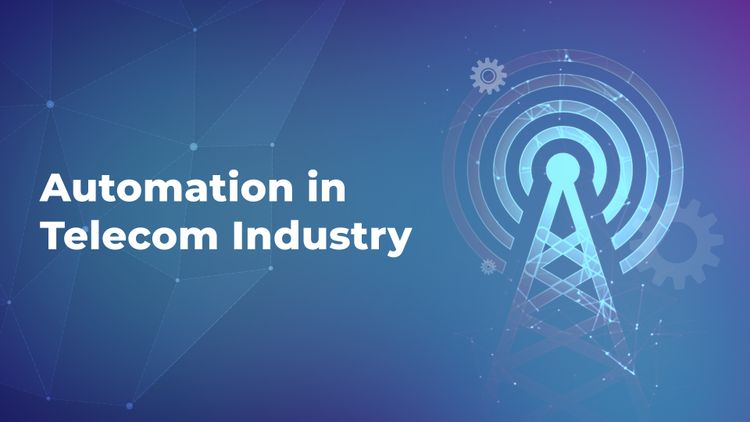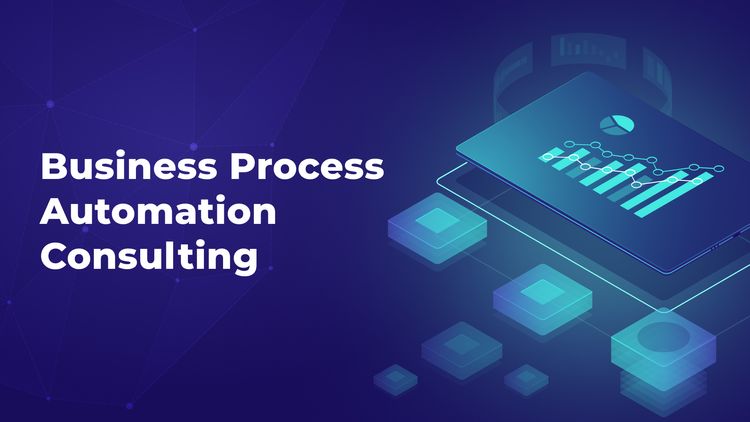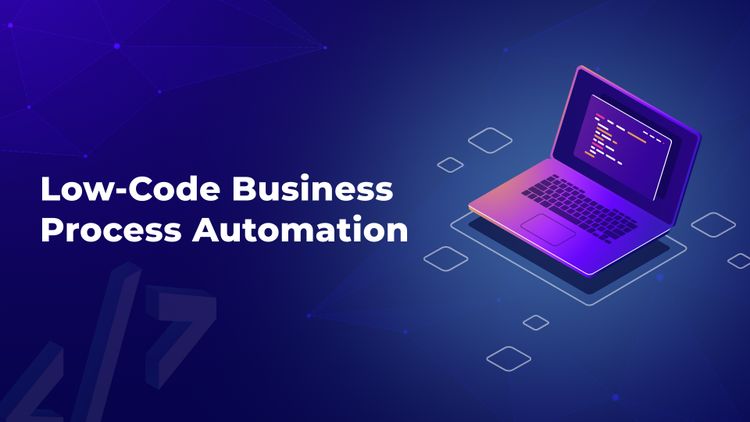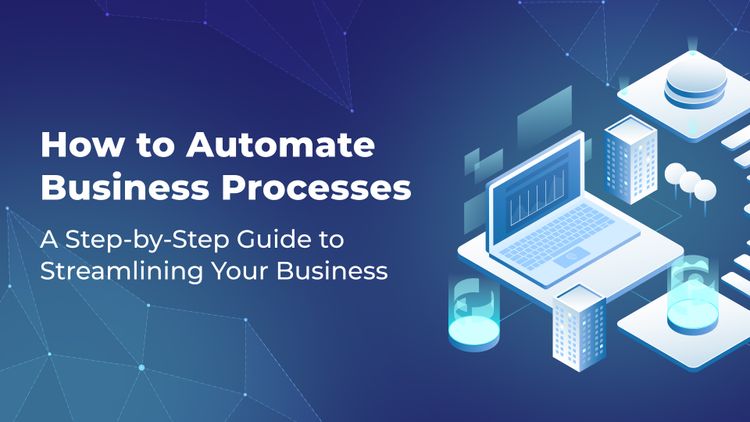Hyperautomation for Business Owners: Exploring the Top 3 Business Process Automation Trends
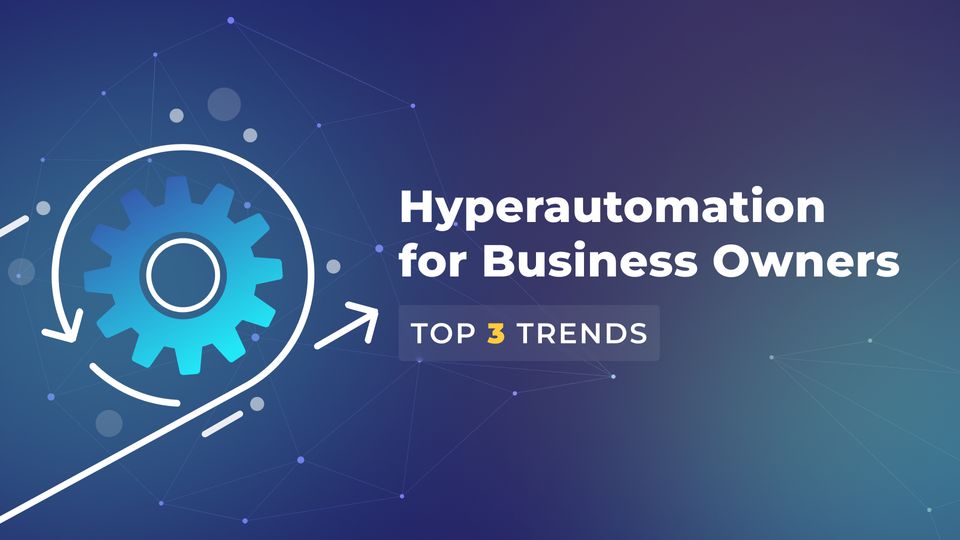
Do you find yourself constantly bogged down by repetitive, time-consuming tasks that are taking up valuable resources and preventing your business from growing? If so, you're not alone. As an IT consulting and software development company, we at Flyaps have been helping enterprises optimize their workflows for more than ten years.
Business process automation has always been one of the top priorities for company owners looking to improve operational efficiency, optimize costs, and gain a competitive edge. Today, with rapid advancement in technology, there are more opportunities than ever before to achieve this.
However, accelerating automation of some processes with cheap, easily accessible tools leave companies struggling with low efficiency and the inability to adapt quickly to sudden market shifts. And this is where hyperautomation can help. By combining the latest automation trends, such as robotic process automation (RPA) and artificial intelligence (AI), hyperautomation unlocks the full potential of automation, letting businesses streamline complex business processes, reduce costs, and enhance their overall agility.
In this article, we will explore three business process automation trends that enable hyperautomation in business. We will also discuss the challenges organizations may face when implementing hyperautomation, and how they can overcome them. So, without further ado, let’s get started.
What is hyperautomation?
Let’s start with a definition. Hyperautomation is an approach enterprises follow to streamline as many processes as possible. As hyperautomation involves various technologies, it helps businesses optimize processes of almost any complexity, which makes it one of the top strategic technology trends.
Remember that horrible time when COVID-19 just started? That was the time when automation technologies became life savers. The first few months were particularly chaotic and many businesses were caught off guard by the sudden shift to remote work. And while automation tools had already been in use in many industries prior to the pandemic, the need for automation became even more critical as organizations sought to maintain business continuity and ensure the safety of their employees.
So, in a way, the pandemic highlighted the need for more advanced automation technologies that would help work remotely without sacrificing productivity, make better-informed decisions quickly, reduce the need for human intervention, and improve online customer experiences. As a result, even in the post-COVID-19 era hyperautomation "has shifted from an option to a condition of survival” as Gartner's Vice President put it.
The key difference between automation and hyperautomation is that hyperautomation is not limited to a single technology solution. It usually entails multiple automation trends. The most promising among them are robotic process automation (RPA), low-code application platforms (LCAP), artificial intelligence (AI), AI development platforms, and virtual assistants.
Robotic process automation (RPA)
Robotic process automation (RPA) is an IT automation trend that involves robotic solutions that mimic human actions like data entry, data extraction, and filling out forms, which saves time and reduces errors, enabling employees to focus on more strategic and creative work. But unlike humans, RPA can work only with structured data. Let's see how it works.
Meet Jane. She's a financial analyst in a company that deals with large volumes of financial data every day. She is responsible for calculating and processing this data. One day, she finds herself overwhelmed with multiple invoices from different vendors that have to be entered into the system. It would take hours for her to go through each invoice and do the necessary calculations!
This is when Jane’s company introduces RPA software to help her deal with such mundane and repetitive tasks. It's a software bot that can capture data from various sources, perform calculations, and enter the information into the system — all within seconds.
So, Jane hands the task over to the RPA system, and it starts working right away. Within a few minutes, the bot finishes processing all the invoices, and the data is automatically entered into the system with zero errors. Jane can save time and reduce her workload while avoiding the risk of making mistakes.
Robotic process automation has great potential in the future. The world market for RPA is growing, and by 2030, its annual growth rate (CAGR) is expected to increase to 38.2%.
Case in point: Automating the back-office tasks in telecom using RPA
RPA has been increasingly adopted in the telecommunications industry. For example, with our help, NetSpark IP & Telecom were able to reap the benefits of RPA and streamline their business processes. Here’s what it looked like.
Before NetSpark reached out to us for help, they didn’t have any automation tools in place. Because of that, the company’s employees had to perform all the tasks manually. It was especially difficult and time consuming when they needed to calculate the best tariff plans for each of their clients: the company had to involve up to 10 employees working on one project at a time only for this purpose.
RPA was one of the technologies Flyaps used to solve our client's problem. Our team developed the CRM/ERP system for NetSpark IP & Telecom and created a calculation tool that does the math, analyzes client data, and offers the best combinations of tariff plans for each client. As a result, NetSpark was able to transform their core business processes and improve efficiency, which allowed them to increase revenue in the long run. When you’re curious to learn the details, please, consider checking our case study.
Low-code application platforms (LCAPs)
Low-code application platforms are tools that allow users to drag and drop pre-built components, excluding the need to write the code from scratch. Such solutions automate many of the processes involved in software development, so companies can create and deploy enterprise applications with minimal resources and time.
Suppose you asked seasoned developers to build a software application. You gave a deadline of two months and a complex set of requirements to adhere to. As developers knew the app development would involve a lot of coding and testing, they started looking for a solution to deliver the project on time and within the set budget. This is when they suggested using LCAP, which would allow them to build the application faster and even use less code. After getting the green light from you, they started the ball rolling.
Using LCAP, your developers managed to build the app in record time, and automate repetitive coding tasks like validation and exception handling. And what’s more important, they didn’t have to sacrifice quality. So in the end, you had your app built from the ground up within a tight deadline, while your team didn’t experience any burnout. A clear win-win.
Low-code application platforms are expected to be the largest component of the low-code development technology market, growing 25% to reach nearly $10 billion in 2023, according to Gartner.
Case in point: Building a low-code application platform for data integration
In fact, a low-code platform can be a successful business in itself. And we have an excellent example for you.
When Airbyte started to cooperate with us, they were an early-stage startup with the idea of creating a low-code data integration platform that would allow developers to build custom connectors to move data from any platform into any other. Although the core of the platform is written in Java, to bring the idea to life, they used Python — the preferred language of Airbyte’s target audience and our Flyaps's main focus — and put a lot of effort into creating a simple and clear interface to attract as many data engineers as possible. By keeping developer experience in focus, Airbyte’s and our engineers managed to make the platform convenient for every programmer, no matter what API standard they're used to.
As a result, within only two years, Airbyte became a top open source ETL platform with more than 10.000 community members and a valuation of $1.5 billion.
Artificial intelligence (AI) and virtual assistants
AI-powered virtual assistants are the most common business process automation examples. They can communicate with humans and respond to queries, automate tedious tasks, provide personalized assistance, and improve customer experience. One of the latest chatbots everyone is talking about is ChatGPT – we bet you know about it.
Now, to better understand how AI helps modern businesses, let's take an example of an online store. Imagine you run a small online store selling handmade jewelry. You receive hundreds of orders every day, and it's becoming a hassle to keep track of everything manually. That's where AI and virtual assistants come in. By implementing an AI-powered chatbot on your website, customers can easily place orders and get instant responses to their queries. AI-based algorithms can also process payments and update your inventory in real-time. Additionally, you can use robotics for streamlining tasks like order processing, shipping, and order tracking, freeing up your time to focus on growing your business.
AI is pretty flexible. Unlike other trends in business process automation, it can process even unstructured data. What’s more, it can extract insights from a wide range of sources such as social media posts, emails, images, and videos, which allows companies to learn more about their customer behavior, preferences, and improve their products or services further.
The global AI market is worth $142.3 billion, as of 2023, and it is expected to increase in the future. Virtual assistants will be one of the fastest-growing AI-driven business process automation trends: by 2025, 50% of knowledge workers will use them daily to perform their jobs. So, what is business process automation without AI-driven technologies today? Something we can hardly imagine.
Case in point: Using AI for resume screening
GlossaryTech, an HR technology startup, needed a solution to automate the time-consuming process of screening resumes for recruiters. The challenge lay in the unstructured data that candidates used when creating their CVs. As they utilized different templates, the information was not standardized, making it difficult for recruiters to analyze and identify the most suitable candidates. This was especially true for recruiters looking for tech specialists, as they needed to compare the skills and technologies mentioned in the resume with those required for open positions.
To solve this problem, our engineers at Flyaps built two AI-based solutions — the CV scanner and Chrome Plugin. These tools were designed to rapidly process natural language data and extract specific pieces of information from CVs and other unstructured documents. By leveraging NLP, the CV scanner and Chrome Plugin could identify critical information that was often missed by standard CV-checking methods. For instance, the tools could detect expertise in backend development even if the word "backend" was not explicitly mentioned. Additionally, the tools served as a tech thesaurus, helping HR specialists understand the technical jargon mentioned in the resumes.
The AI-based approach made the CV scanner and Chrome Plugin highly efficient solutions that could quickly and accurately analyze technical CVs. Compared to traditional CV-checking methods, these tools are leagues ahead, providing recruiters with the necessary information to identify suitable technical specialists in a matter of seconds.
Challenges of hyperautomation
Hyperautomation is a more complex process than the adoption of one or two tools — it requires systematic changes. Here are the four most common obstacles that prevent people from implementing hyperautomation:

Process complexity
Hyperautomation involves multiple technologies, workflows, and processes that can be challenging to implement and manage.
Every organization has unique business processes, requirements and obstacles, and available tools could not be sufficient to address them. In this case, you might need custom solutions built to fit your specific needs. This is exactly what we do at Flyaps. We help businesses in telecommunications and other industries develop custom BPA solutions. A business intelligence system, a robotic process automation tool, or an AI application — those are the areas we can assist you with.
Integration complexity
Many businesses use multiple systems or software applications to manage various aspects of their operations. There is a risk that when integrating business process automation technologies with these systems, they may not be compatible with one another. Different systems may have different data formats and structures, making it difficult to transfer information between them.
It's a good idea to collaborate with software development partners who have expertise in data integration and API development. As you already know, Flyaps was part of Airbyte's software development team. We built a solution that offers the largest catalog of ELT connectors to data warehouses and databases. With our expertise in handling intricate data systems, we can guarantee smooth data migration across various platforms.
High cost
Hyperautomation requires major investments. Business owners may hesitate if they are not sure whether the investment will return.
Flyaps team of engineers, thanks to years of experience behind our backs, can speed up software development by using the right technologies to avoid high costs (like LCAP), and following Agile processes to reduce risks.
Data quality
If hyperautomation is used to automate processes without adequate quality control, it can lead to inaccurate, incomplete, or inconsistent data, which can significantly impact business outcomes.
Cooperation with senior-level developers is the key to avoid most of the risks here. Our team can assist in the integration of business process automation technologies such as RPA, workflow management systems, and AI. Flyaps can conduct a thorough analysis of your current business processes and systems to identify areas that should be automated. Our experts will then work closely with your team to design and develop customized solutions that meet your specific business needs. We will also provide training and support to ensure a seamless transition towards increased efficiency and cost savings. No matter the industry, we have the right expertise to help you implement effective business process automation solutions.
Conclusion
As the world continues to evolve, hyperautomation will be playing a vital role in shaping the future of work and business. And if you, as a business owner, want to keep up in a competitive market and get the most out of the latest business process automation trends, you need a team of experienced professionals. Experts, who understand the technology and the business environment. And this is what Flyaps is all about.
Our Flyaps team specializes in custom software development, RPA, AI, and Machine Learning, so we can be a good fit for your hyperautomation project. Schedule a consultation with our team to see how our business process automation expertise can benefit your business.
Read also: How to Automate Business Processes: A Step-by-Step Guide to Streamlining Your Business

